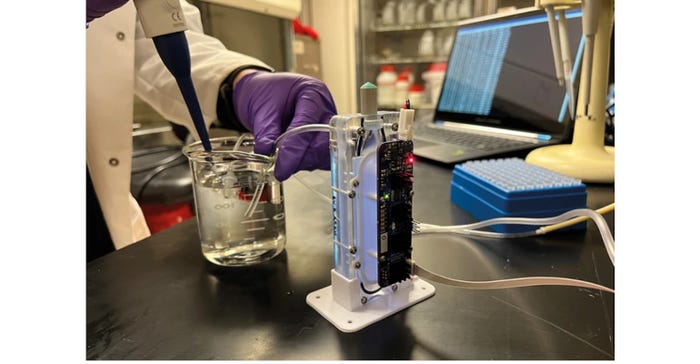Dialysis on the Go? Working Toward an Artificial Kidney Device
A new technology in the works aims to give kidney dialysis patients a better quality of life by enabling them to complete their treatments anywhere, anytime.
June 29, 2023
![artificial kidney Conceptual Design[75-online].jpg artificial kidney Conceptual Design[75-online].jpg](https://eu-images.contentstack.com/v3/assets/blt14ac89070d5e4751/blt81c111a0ce52af23/651ade13dd51636f414cb430/Conceptual_20Design75-online.jpg?width=850&auto=webp&quality=95&format=jpg&disable=upscale)
There is no doubt that dialysis treatments can be life-sustaining for patients with kidney failure. But dialysis patients often experience a lower quality of life because they are tethered to machines for hours at a time, as often as four or more times a week, said Dr. Shen Ren, assistant teaching professor, Mechanical Engineering Department, Seattle University. “We’re trying to develop a system that is not only more user-friendly, but also brings the quality of life back to patients,” he said, in an interview with Design News.
Since day one, Ren said his team has worked with a patient advisory board to incorporate their input in developing a portable, artificial kidney device. What they have heard most from the participants is that patients want such a device to be lightweight, easily accessible, and something that could naturally fade into their daily lives.
The first obstacle that Ren’s team tackled was making the device more lightweight, so that it could be easily carried. The key to this was decreasing the amount of dialysis fluid, or dialysate needed in a treatment cycle. A typical in-clinic dialysis machine uses approximately 120 L of dialysate per treatment, which is much too heavy for a patient to move around with, he said.
“The difference for our system compared to traditional dialysis is that we propose to use only one liter of dialysate or even less to circulate and regenerate the clean dialysate,” he said.
The team’s prototype uses photo oxidation technology to remove certain uremic toxins from the dialysate. “For preliminary testing, we are using urea as a marker to prove the efficacy and efficiency of our system,” Ren said. “We're converting urea into nitrogen, CO2, and water,” he said, noting that they are using titanium oxide because they have found it to be more effective in converting urea.
Other coating materials that can reduce blood clotting, which are under development right now, are also used in the device, Ren said.
The conceptual design is a backpack-sized device for maximum portability because it could possibly be used 24/7, Ren noted. It is designed to remove at least 15 g of urea over 24 hours, which Ren said is comparable to in-clinic dialysis machine performance and is sufficient for the majority of dialysis patients.
Because it is meant to be worn on the patient’s back, Ren said his team needed to address the heat generated by the device. “We will also need to design ventilation and maintain a cooler environment to make it more accessible for the patient,” he said.
![artificial kidney Prototype Version_1[95].jpg artificial kidney Prototype Version_1[95].jpg](https://eu-images.contentstack.com/v3/assets/blt14ac89070d5e4751/blt92c47f7c549021ec/655c753b9eeb9f040ab7b7d0/Prototype_20Version_1_5B95_5D.jpg?width=700&auto=webp&quality=80&disable=upscale)
As for a connecting technology that the patient can easily use to attach and detach themselves from the machine, Ren said his team is aware that this is something that needs to be able to be done by the patient, without the help of a clinician. “This is something we are working on, and we have some major breakthroughs already,” he explained.

Collaborating to Develop an Artificial Kidney Device
The collaborative project between Seattle University and the Center for Dialysis Innovation at the University of Washington, which involves a team of partners from nephrology, bioengineering, chemical engineering, electrical engineering, materials science, and human-centered design engineering professionals, intends to proceed with in-center testing of a proof-of-concept prototype and a scaled-up system with local partners soon.
About the Author(s)
You May Also Like



.png?width=300&auto=webp&quality=80&disable=upscale)
